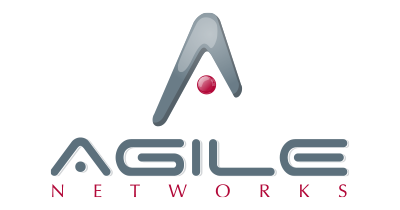Agile Networks Blog
We’re sure at some point you’ve used the idiom, “If it ain’t broke, don’t fix it,” particularly in regards to your IT. While it might feel responsible and safe to stick to this motto as much as possible, there will come a time when it becomes dangerous to hold fast to it. In fact, business technology professionals might even call this motto irresponsible. Here’s why.
Adopting smart office technology—from connected lighting and thermostats to sophisticated monitoring sensors—can transform your workspace, offering efficiency and a modern aesthetic. Yet, as IT experts, we must guide you past the shiny facade to confront a critical reality: every new smart device is a potential gateway for cyber threats.
You should not have to sacrifice security for the sake of being "high-tech." However, implementing these solutions without a robust security strategy is a risky gamble.
Technology doesn’t last forever, so what would you do if your keyboard or computer monitor bit the dust tomorrow? Some might just throw the technology in the trash and not think twice about it, but that’s the exact opposite of what you should do. Instead, we urge you to go through the proper channels to properly dispose of your old electronics—if not for the environment’s sake, then for your business’.
An old fable says that a frog placed in a pot of boiling water will jump out immediately, but if the water is warmed to boiling with the frog already in it, the frog won’t notice until it is already too late. Many businesses today act like that frog, overlooking minor tech issues that signal a growing problem until the damage is done.
Let’s see if we can identify some of these issues to help keep you out of hot water.
Artificial intelligence is all the rage these days. In fact, most businesses are using it for a multitude of things. With everyone all-aboard the AI train, it’s easy to confuse the computational power and speed AI offers to be infallible. Unfortunately, AI can get things going sideways if you aren’t careful. When it does go wrong, the consequences can be more than just an inconvenience.
Here's a look at some of the most critical ways AI can go wrong:
What goes through your head when you hear the words “IT audit?” Are you worried about your business’ deepest and most shameful technology secrets being exposed, or are you excited about the opportunity to resolve issues that you might not even know exist? We hope you have the latter mentality, as it’s the appropriate one—especially if you want to build a business that stands the test of time.
When was the last time you gave the time of day to your business’ phone system? The Internet has largely made traditional telephone solutions obsolete, yet countless businesses still cling to them for dear life. Still, dismissing the importance of the telephone as a way to connect with your customers would be foolish, so our focus today is how businesses like yours can implement phone solutions that leverage the good while eliminating the bad.
Your business’ relationship with IT has a direct correlation to how well it operates. If your technology fails, your business suffers productivity losses, as well as financial ones due to decreased reliability in the eyes of customers and clients. One of the best ways to ensure you’re following through on the promises you make to your customers is to implement a proactive IT strategy to replace the reactive approaches seen in the past.
It's a familiar challenge for businesses: how do you build customer loyalty and a strong user experience while also making sure that their data is protected? Sustainable success depends on mastering this delicate balance. Instead of choosing one over the other, the goal is to optimize data protection without hindering your ability to engage customers and drive growth.
Does your organization have the good fortune of having an in-house IT department? More likely than not, even if you do, your department has maybe a couple of technicians at most, and they are all up to their ears in work, whether it’s keeping up with maintenance or struggling to implement new and innovative solutions. If you’re looking for ways to upgrade your organizational IT infrastructure, we recommend you start with a network audit to determine what needs to be done (and how we can help you do it).
How often do you find yourself thinking about how new technology will impact your business’ bottom line? Chances are, you have considered implementing a new piece of technology or two, but you might get stuck on whether or not it will actually be worth the investment. This is where you consider the return on investment that technology will provide, or ROI. Here’s how you can make sure your technology is providing results and what you can do if it doesn’t get the results you’re looking for.
AI is no longer a futuristic concept; it's a powerful tool that smart business owners use to their advantage. Many companies struggle to move beyond the hype and effectively integrate AI into their operations. Making the most of your AI initiatives requires a strategic approach. Here are five essential tips to help you succeed.
Are you blindly sprinting forward where your technology is involved, picking things that sound good, hoping you have enough forward momentum to reach the next stop? Unfortunately, this approach is often an option that many businesses take, usually to their detriment.
We want to remind you that you there is a better way: creating an IT roadmap to strategically merge your technology with your more functional business goals, helping you progress with every dollar invested.
The Internet is a staple in most offices around the world, and you’d be hard-pressed to find one that doesn’t rely on it in some fashion. A big part of seeing success with the Internet depends on your bandwidth, as well as your network’s capacity to reach the capabilities of your Internet service provider. Today, we want to break down what bandwidth is, as well as how you can make the most of your Internet package.
There’s a specific stress that comes from the disconnect between the money you invest in your business IT and the value that comes back from it. Sure, you know what the money is being spent on… but that’s a far cry from knowing how these investments are shifting the needle.
Let’s discuss the importance of understanding what your IT is telling you and when you need to demand more information… politely, of course.
Your business wants to use every opportunity it can to increase its bottom line and eliminate unnecessary costs, but how often does printing enter into the conversation? You waste more paper, ink, and toner than you think by not keeping a close watch on your printing practices. The right technology can not only reduce these wasteful practices but eliminate them entirely, giving you more capital to invest elsewhere in your business.
You're in the middle of a crucial presentation, and suddenly, your screen freezes. Or perhaps your customer relationship management (CRM) system goes down during peak sales hours. Your first instinct might be to panic, to hit every button, or to call everyone you know. This month, we talk about how overreacting to your technology troubles can be just as bad as the troubles themselves.
You’ve probably heard the adage, work smarter, not harder. It usually describes the use of technology to bring time-and-money-saving benefits to the table that human workers can’t produce on their own. As good as technology is at boosting productivity and efficiency, it only works if you are able to get your employees engaged.
While the allure of shiny new gadgets and cutting-edge software is undeniable, the real magic happens when these investments directly translate into tangible productivity gains, transforming how we work and propelling businesses forward.
The CIO or Chief Information Officer of any organization has a lot of pressure on them to get their organization’s technology right. Not only do they need to put strategies in place that will help the organization prosper; they need to take the brunt of the heat when these IT initiatives don’t work out in the way they forecast them to. A lot of their job is to say yes when their best instinct is to say no. Today, we will look at three of the technologies that today’s CIOs are green-lighting.
Customer Login
News & Updates
Contact Us
Learn more about what Agile Networks can do for your business.
Agile Networks
705B Moore Industrial Park
Prospect Park, Pennsylvania 19076




















